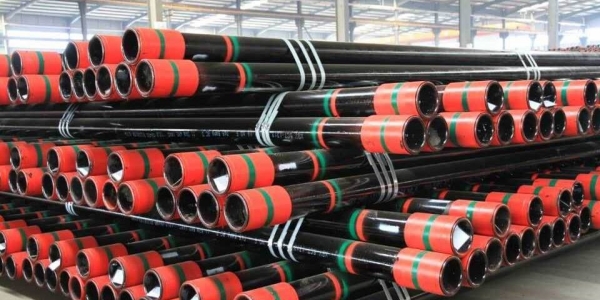Oil casing is an important part of oil drilling. Quality inspection of oil casing is crucial to ensure the safety and smooth progress of drilling operations. Therefore, the production and installation of oil casing involves multiple inspections. This article will introduce in detail the inspection methods of oil casing.

The quality inspection methods of oil casing mainly include the following aspects:
1. Appearance inspection
Appearance inspection is one of the most basic quality inspection methods. By carefully observing the appearance of the oil casing, you can check whether there are cracks, deformations, corrosion and other problems. At the same time, check whether the welds of the casing are complete and whether there are welding defects.
2. Dimensions
Dimensional measurement is an important part of oil casing quality inspection. By using measuring tools such as calipers and vernier calipers, measure the diameter, wall thickness and other dimensions of the casing to ensure that it meets the design requirements.
3. Material testing
Material testing of oil casing is one of the key steps to ensure its quality. Commonly used material testing methods include chemical composition analysis, metallographic structure analysis, hardness testing, etc. These testing methods can check whether the composition of the casing material meets the standard requirements and whether the organizational structure is uniform and dense.
4. Pressure detection
Oil casing needs to withstand high pressure during drilling operations, so pressure testing is one of the essential quality inspection methods. By installing the casing on special testing equipment, applying a certain amount of pressure, and observing whether there is leakage, deformation, etc., it is ensured that the casing can withstand the expected working pressure.
5. Magnetic particle inspection
Magnetic particle inspection is a commonly used non-destructive testing method, used to detect cracks, defects and other problems on the surface of casing and welds. By coating magnetic powder on the surface of the casing and then applying a magnetic field, you can observe the accumulation of magnetic powder at cracks or defects to determine whether there is a problem with the casing.
6. Penetration testing
Penetrant testing uses the capillary action of a liquid to penetrate the penetrant into open defects on the surface of solid raw materials, and then uses a developer to draw the penetrant out to the surface to reveal the presence of defects. Penetrant testing is suitable for a variety of metal and ceramic workpieces, and the time from the penetrating operation to the appearance of defects is relatively short, usually around half an hour. It can detect surface fatigue, stress corrosion and welding cracks, and directly measure the crack size.
7. Ray detection
Radiographic inspection uses the difference in the amount of radiation transmitted by normal parts and defective parts to determine the blackness on the film.
8. Ultrasonic testing
When ultrasonic waves propagate in the material being tested, changes in the material's acoustic properties and internal structure have a certain impact on the propagation of ultrasonic waves. By detecting the extent and conditions of ultrasonic impact, changes in material function and structure can be understood.
In short, the quality inspection of oil casing is an important link to ensure the safety and smooth progress of drilling operations. Through appearance inspection, dimensional measurement, material testing, pressure testing, magnetic particle testing, penetrant testing, radiographic testing, ultrasonic testing and other methods, the quality of the casing can be comprehensively and accurately evaluated, problems can be discovered and solved in a timely manner to ensure smooth oil drilling operations conduct.

 English
English Español
Español




 Tel : +86-18565811709
Tel : +86-18565811709 Email :
Email : 

 News
News




